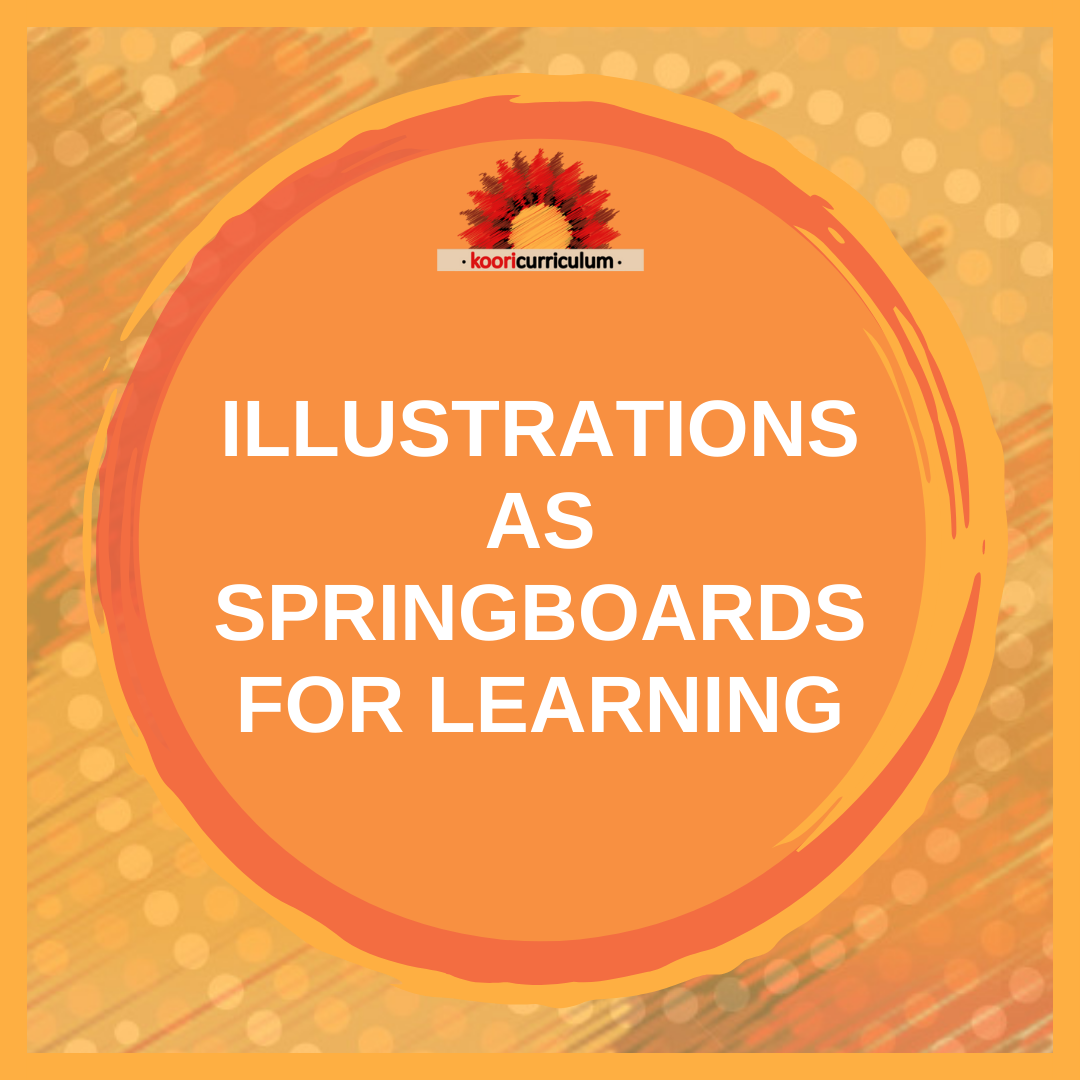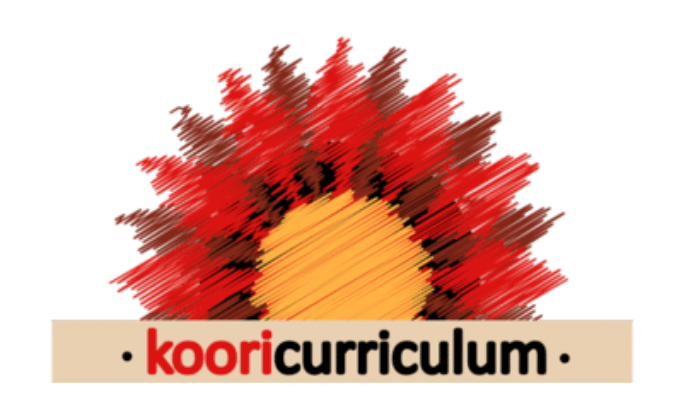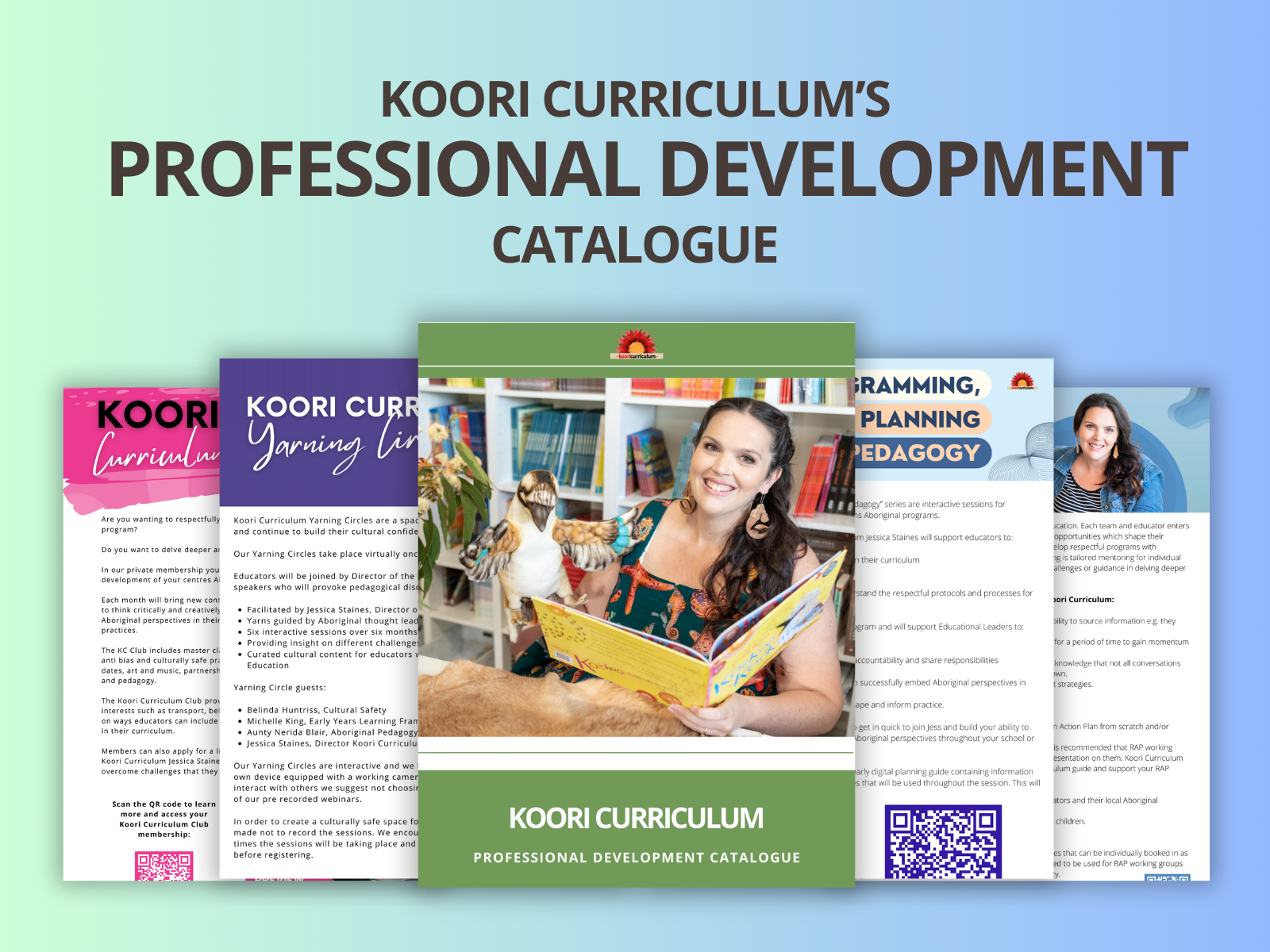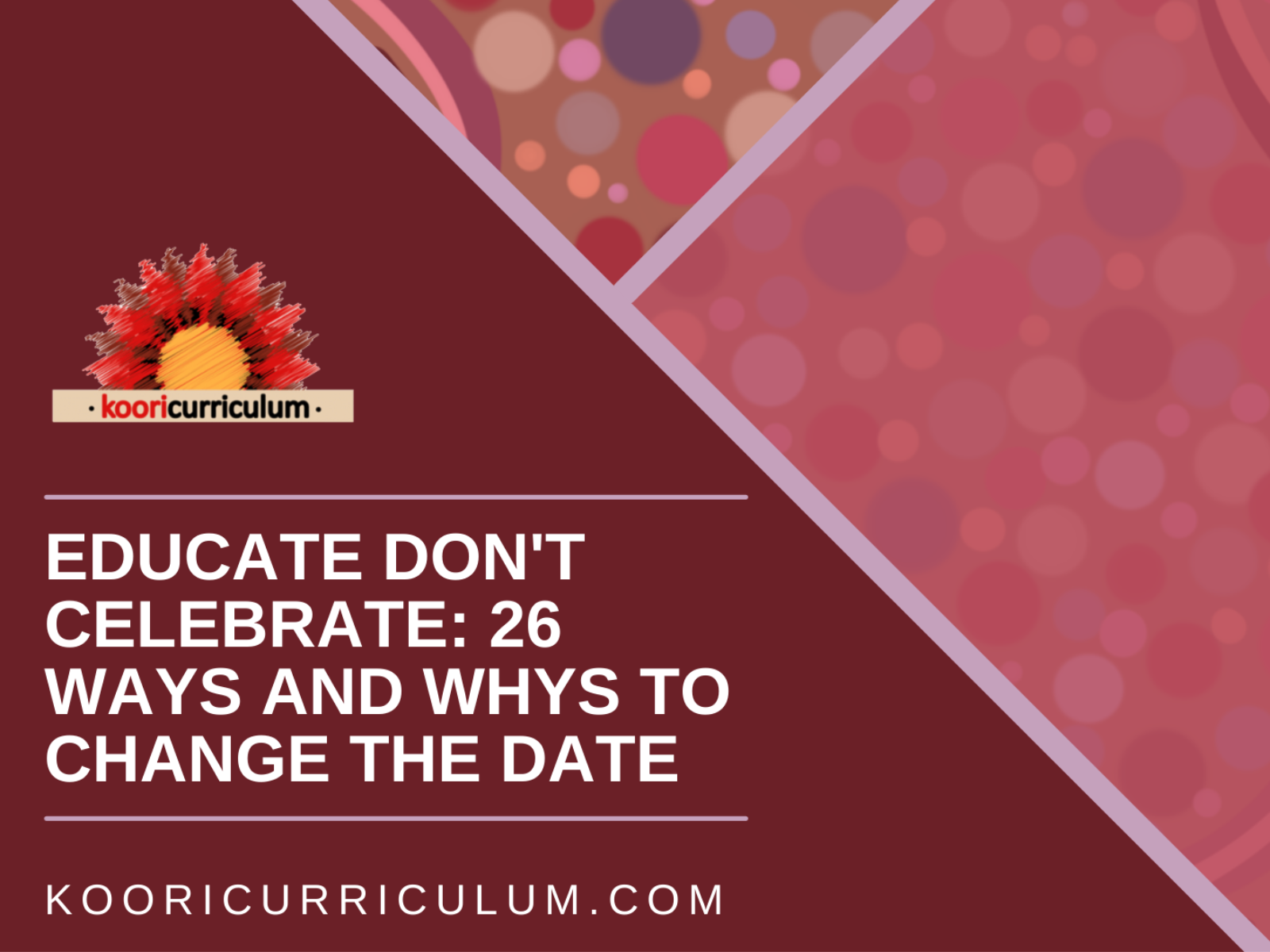
Illustrations as Springboards For Learning

Illustrations created by Aboriginal artists can serve as great provocations for discussion and learning. Here are some ideas of how we can extend upon and deepen children’s interactions with illustrations.
- Share with children information about the author and illustrator. Use the Aboriginal language map to locate where they are from.
- Looking at the illustration on the front cover what clues does the artwork give that tell us what the story might be about?
- When reading books pause at each page so children can take in the artwork and share their thoughts and interpretations.
- Discuss the illustrators use of colour. Talk about interpretations of colour whether they are reflective of emotions, weather or landscapes.
- Ask children open ended questions etc What can they see? What can they feel?
- Ask children to describe the artists technique and brainstorm on what materials may have been utilised to create it.
- What do children notice about the artists style?
- Talk about textures e.g. smooth or rough.
- Ask children to pick their favourite part of the story and make their own creative expression of it. Children could even be encouraged to draw themselves within the artwork.
- Provide children with materials to make puppets e.g paddle pop sticks of which they can attach drawings of characters. These can be used in small world play supporting children to recall and retell the story. Children can also use these puppets to extend upon and create their own narratives.
- Children could be encouraged to recall the story that was told.
- Aboriginal symbols can be used to sequence out the story structure. This is a great experience to ascertain children’s comprehension of the story.
- Encourage children to reflect on what happened at the beginning, middled and end of the story.
- Children can be supported to draw the story.
- Retell stories through dramatic play, visual arts, oral storytelling or photography.



